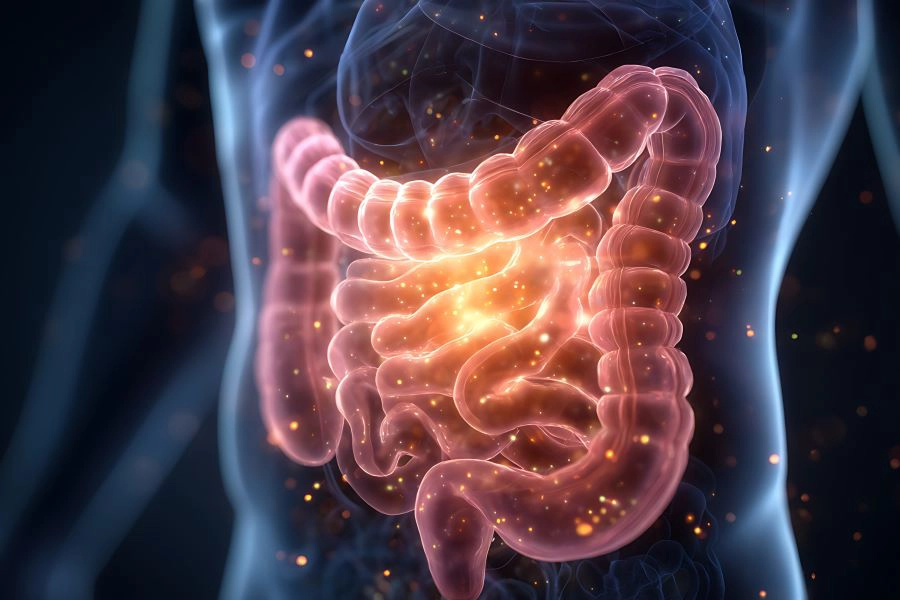Natural metabolic health: Rousselot’s Nextida GC collagen peptides boosts GLP-1 response
Key takeaways
- Collagen peptides can naturally boost GLP-1 production, helping regulate blood sugar, slow digestion, and promote satiety without pharmaceuticals.
- Nextida GC’s collagen composition uniquely enhances GLP-1 secretion, outperforming 16 other peptide variants due to its precise peptide structure.
- Unlike GLP-1 drugs, collagen peptides support a natural metabolic rhythm, helping reduce glucose spikes while maintaining bone and muscle health.

With more consumers seeking natural health solutions in the wellness space, nutrition solutions that support metabolic processes have come into focus. Nutrition Insight speaks with Rousselot about its specific collagen peptide, Nextida GC, to learn more.
The ingredient was designed to control the “glucose rollercoaster” in healthy individuals and share strategies to manage glucose fluctuations. At the company’s recent Innovation Days in Gent, Belgium, we met its science integration manager, Dr. Catarina Silva, who dives into the science behind GLP-1, GIP (gastric inhibitory polypeptide), and collagen compositions.

How do collagen peptides trigger GLP-1 release and how does affect metabolic health?
Silva: Long story short, GLP-1 is like an alarm that tells your body that food is coming, so it can prepare. That “alarm” is located in your intestine. When food reaches your intestine, certain specialized cells recognize it. These cells secrete GLP-1, which then goes into the bloodstream and does several things: it stimulates the pancreas to produce insulin, reduces glucose spikes, slows gastric emptying so your body has more time to process food, and sends a signal to your brain that you’re full and don’t need to eat anymore.
Evolutionarily, we’re made to eat, so this system helps regulate that. What we’ve done with Nextida GC is use that natural process. We created a specific collagen composition that enhances GLP-1 secretion more effectively than other collagen compositions we tested. We tested 17 different collagen peptide candidates — all processed slightly differently — and this one stood out by a lot.
 Rousselot’s science integration manager, Dr. Catarina Silva.The cells recognize these differences. It’s not just “collagen equals protein.” The cells seem to prefer a specific composition more than others.
Rousselot’s science integration manager, Dr. Catarina Silva.The cells recognize these differences. It’s not just “collagen equals protein.” The cells seem to prefer a specific composition more than others.
What compositions did you test, and how did you narrow them down?
Silva: The interesting thing is that people often forget that collagen, like DNA, carries a lot of information. Depending on how you cut the collagen molecule, you get different peptides — and the cells can read those differences. For example, if it’s hydroxyproline or proline-hydroxyproline, that small switch matters.
It’s like using the alphabet: we have the same 26 letters, but you create different words and meanings depending on how you combine them. We don’t change the collagen molecule itself — it’s not a novel food — but by cutting it in different ways, we create different “words” or stories.
Imagine a book where all the words are joined together. You can separate them in different ways to create different storylines. That’s what we do — we cut the collagen differently to form distinct peptides, and the cells respond to those differences.
Do GLP-1 and GIP similarly respond to these collagen peptides, or are you mainly focusing on GLP-1?
Silva: We look at both hormones because in a healthy person, they work together and potentiate each other. That’s why we focus on both — it gives a more balanced, harmonious way of reducing glucose spikes.
 Specialized intestinal cells release GLP-1 in response to collagen peptides, helping balance glucose and appetite signals.In your body, GLP-1 and GIP naturally rise and fall in coordination. The interesting part is that right after you eat, levels rise, and then they go down again because you don’t need them anymore. That’s the beauty of using Nextida GC before a meal — it prepares your body for food, then naturally returns to baseline afterward. Like any good alarm, it needs to turn off eventually.
Specialized intestinal cells release GLP-1 in response to collagen peptides, helping balance glucose and appetite signals.In your body, GLP-1 and GIP naturally rise and fall in coordination. The interesting part is that right after you eat, levels rise, and then they go down again because you don’t need them anymore. That’s the beauty of using Nextida GC before a meal — it prepares your body for food, then naturally returns to baseline afterward. Like any good alarm, it needs to turn off eventually.
How do collagen peptides compare to other nutritional or pharmacological approaches that target GLP-1?
Silva: The most famous comparisons are, of course, the pharmaceutical drugs. Those can’t really be compared directly. They deliver an artificial GLP-1 — they synthesize it to make sure the body can’t degrade it quickly, so it stays longer in circulation.
With the natural GLP-1 your body produces, enzymes quickly break it down so it doesn’t stay active too long. Some of those medications last for a week, and some for a day, which is great for people who are diabetic or obese. But for a healthy person, that’s like using a cannonball to hit a fly.
Pharmaceuticals work, but they can lead to loss of bone and muscle mass because you eat much less — essentially, your body is in starvation mode.
With collagen peptides, we don’t give you GLP-1 — your body makes its own. Nextida GC simply helps it produce more, naturally. It’s a short-term, balanced boost rather than a constant signal. That’s a key difference, especially for healthy people.
You want your GLP-1 and insulin to rise and fall — not stay high constantly. That’s how your body avoids desensitization and maintains a healthy metabolic rhythm. You still need glucose — your body needs fuel. But you want to avoid the big spikes, because even something like cereal and milk can send glucose levels above normal.
Think of it like driving a car: if you keep revving the engine, it damages the system. The same happens with repeated glucose spikes — they wear your body down and make you feel fatigued.
We want to help people use their metabolism efficiently over the long term. If you treat your body well, it can function better for longer — that’s what we aim for in improving metabolic health.













